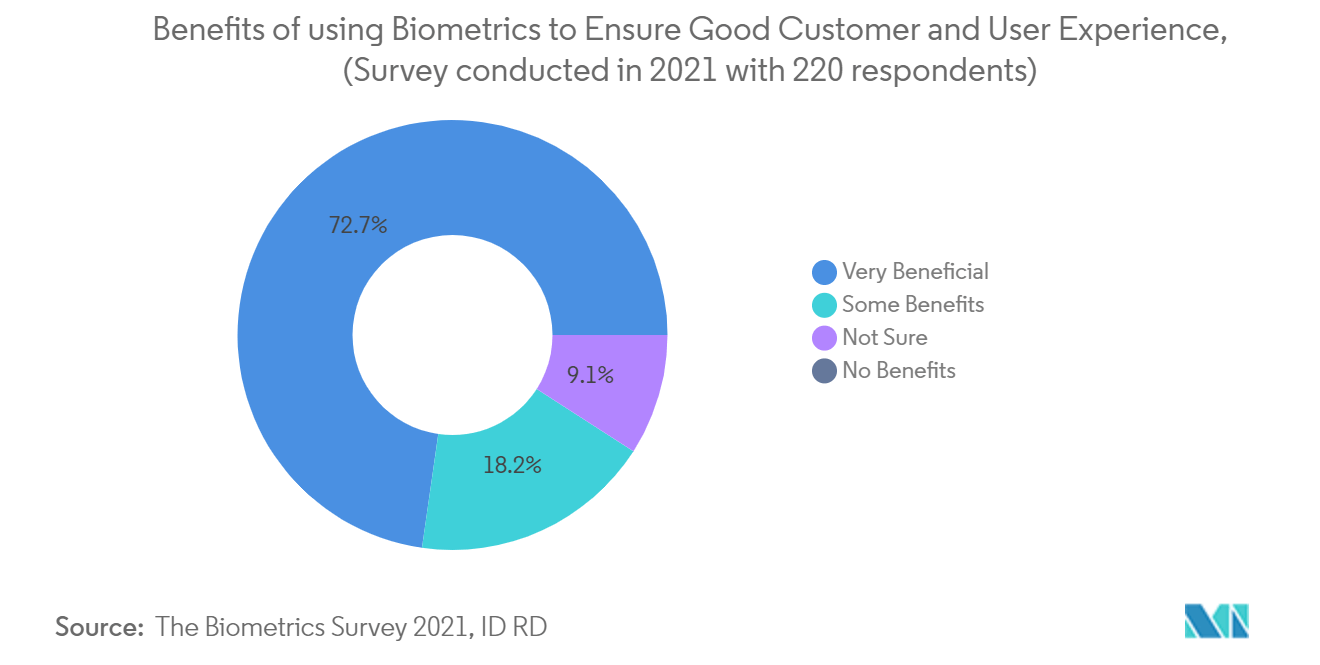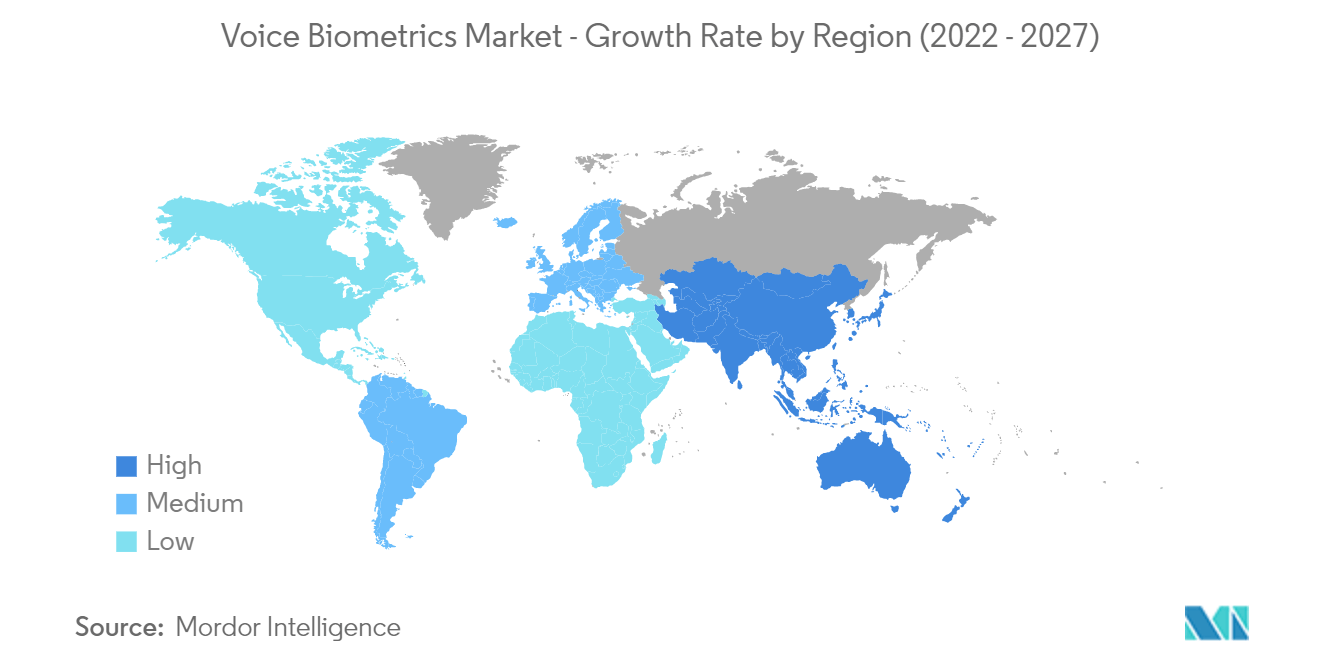Market Trends of Voice Biometrics Industry
This section covers the major market trends shaping the Voice Biometrics Market according to our research experts:
Banking, Financial Services, and Insurance have Emerged as the Leading Fields for Voice Biometric Applications
- Banks must continuously stay on top of the best-suited methods for authentication to combat online fraud. Traditionally, banks have used knowledge-based authentication methods such as PINs and one-time passwords. The demand for contactless and seamless technologies has permeated even banking security, especially in light of the COVID-19 pandemic's impact. Voice biometrics in banking is a promising online banking solution that goes beyond the retina and fingerprint scanners that require people's physical presence.
- Further, as attackers/hackers have become more sophisticated and the number of potential targets or entry points has expanded, cyber attacks in the financial industry have increased significantly. The sheer number of users has also drastically increased along with the proliferation and addition of new banking and financial technologies. Despite numerous warnings from bankers, people fall prey to scams. For instance, in fiscal 2021, the Reserve Bank of India (RBI) reported around 7,400 bank fraud cases across India. In 2020, RBI said 8,700 bank fraud cases in India with an INR 1.85 trillion. Further, as per the information reported by Indian Computer Emergency Response Team (CERT-In), an unlimited number of 2,46,514 and 2,90,445 cyber security incidents about digital banking were reported in 2019 and 2020 in India, respectively.
- Also, according to VMware, the first half of 2020 witnessed a 238% increase in cyberattacks targeting financial institutions compared to the previous year. Nearly 75% of banks and insurance groups have seen a spike in cybercrime since the pandemic's start.
- Voice biometrics in banking is crucial to extending comfortable banking services and improving customer experience. For instance, banks offer social security products like pensions and insurance requiring proof-of-life authentication when the payments are disbursed. Voice biometrics facilitate the discrete authentication of people. Also, biometric technology can identify several features of human voices to make identification reliable and tamper-proof.
- Voice biometrics also aid in enhancing the KYC processes. For instance, multilingual countries like South Asia have people of varying education levels across far-flung areas. Voice biometrics can help include such people into a financial security net as the solutions are language-independent.
- Further, physiological biometrics necessitates scanners at the customer's location, whereas voice biometrics require nothing more than existing phone lines and mobile infrastructure. The software is present on the bank's end. To create a sample to authenticate, the user may be asked to say a randomly generated phrase. If a match is not found, access will be denied. This method is effective against hackers who attempt to use voice recordings.

North America is Expected to Hold the Largest Share
- Voice recognition technology is used in various applications due to the rapid growth in the acceptance of mobile and cloud technologies and unmatched technological advancements in computing power. The healthcare industry is expected to play a significant role in developing voice recognition technology in the United States, owing to its use in producing health-related data records. Voice recognition technology has the potential to replace some of the more traditional approaches that are still in use.
- According to the Center for Medicare and Medicaid Services, United States, National health spending is projected to grow at an average annual rate of 5.4% from 2019 to 2028 to reach USD 6.2 trillion by 2028. This also includes the expenditure for IT and computing services for better storage and protection of patient data. Furthermore, health systems are searching for voice-enabled transcriptions to identify reimbursable conditions discovered during the diagnostic while ensuring that crucial health indicators are not missed.
- The lucrative banking sector in the region has seen a rise in the adoption of biometric technologies as the number of fraud cases has increased. In the area, many secure and diverse security solutions are being introduced. In North America, G+D Mobile Security has introduced its FIDO-compliant Convegno Mobile Authentication in conjunction with Samsung SDS. The solution leverages biometrics such as fingerprint, face, iris, and voice credentials to provide security solutions with multi-factor authentication.
- Several Canadian organizations, including Royal Bank of Canada, Bank of Montreal, and Rogers Communications, have begun using speech biometrics to identify consumers over the phone. According to the TD Bank Group of Canada, customers can sign into their accounts or skip call center security questions by providing a voiceprint. For this, TD uses VoicePrint. TD VoicePrint is a voice recognition system that allows customers to use their voiceprint to verify their identity and identify themselves when speaking with one of the bank's Live Customer Service employees over the phone.
- More stores in Canada are moving to self-checkout lanes to serve customers better. More than half of Canadians (54%) favor self-checkout lanes, and 66% use them at least some of the time, according to Dalhousie University's Grocery Experience National Survey Report. Customers can use self-checkout lines at their own leisure, but they are not necessarily as efficient. As a result, many Canadian merchants are looking for voice biometrics solutions in their stores. However, due to the initial high cost of equipment and gadgets, many retailers in Canada will be unwilling to upgrade to the latest technologies.


